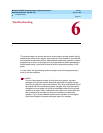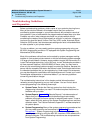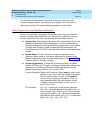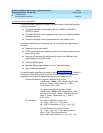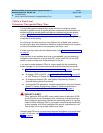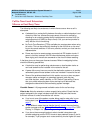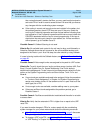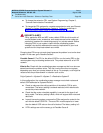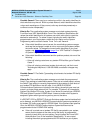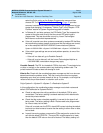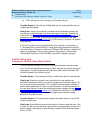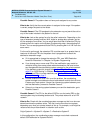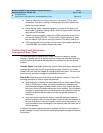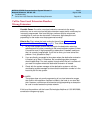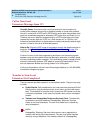
MERLIN LEGEND Communications System Release 6.1
Network Reference
555-661-150
Issue 1
August 1998
Troubleshooting
Page 6-8Call to Non-Local Extension: Silence or Fast Busy Tone
6
■ To change the extension FRL, see
System Programming,
Chapter 3,
“Common Administrative Procedures.”
■ To change the FRL assigned to a remote access barrier code, see “Remote
Access” in
System Programming
, Chapter 4. Follow the guidelines in
“Remote Access Default Class-of-Restriction Settings” on page 6
.
SECURITYlALERT:
!
FRLs, applied to ARS and UDP routes, default CORs for all tie and/or all
non-tie tandem trunks, extensions, and remote access barrier codes are
particularly important for maintaining security in a private network. Before
changing FRLs in your system, check with the coordinating system
manager, who should understand the security implications for your local
system and for the private network as a whole.
Changing local FRLs may not work simply because the problem is not on the local
system. In this case, go to Possible Cause 5.
Possible Cause 5: The FRL for the default COR for non-tie trunks (PRI) on the
remote system may be blocking tandem calls. The private network is an all PRI
network.
What to Do: Check with the coordinating system manager so that he or she can
determine where the problem exists. This may involve more than one system,
depending upon how your private network is set up. For example, a call might be
routed across the private network in a fashion such as this:
Origin System A
→System B→System C→Destination System D
In this configuration, the coordinating system manager must check routes and
default COR attributes for Systems B and C.
■ Check to make sure the calling restriction of the default COR is set to
unrestricted. The factory setting is outward restricted, which blocks calls
across the private network.
■ Check that the routes voice/data capability is correct for the type of call
being made. The factory setting is Both, which will support both voice and
data calls.
■ In each intervening system, compare the FRLs assigned to routes for the
call with the default COR FRL. The route FRL must be equal to or lower
than the default COR value or the call is blocked. The factory setting is 3.
■ If FRL settings are not the cause, go to Possible Cause 6.




